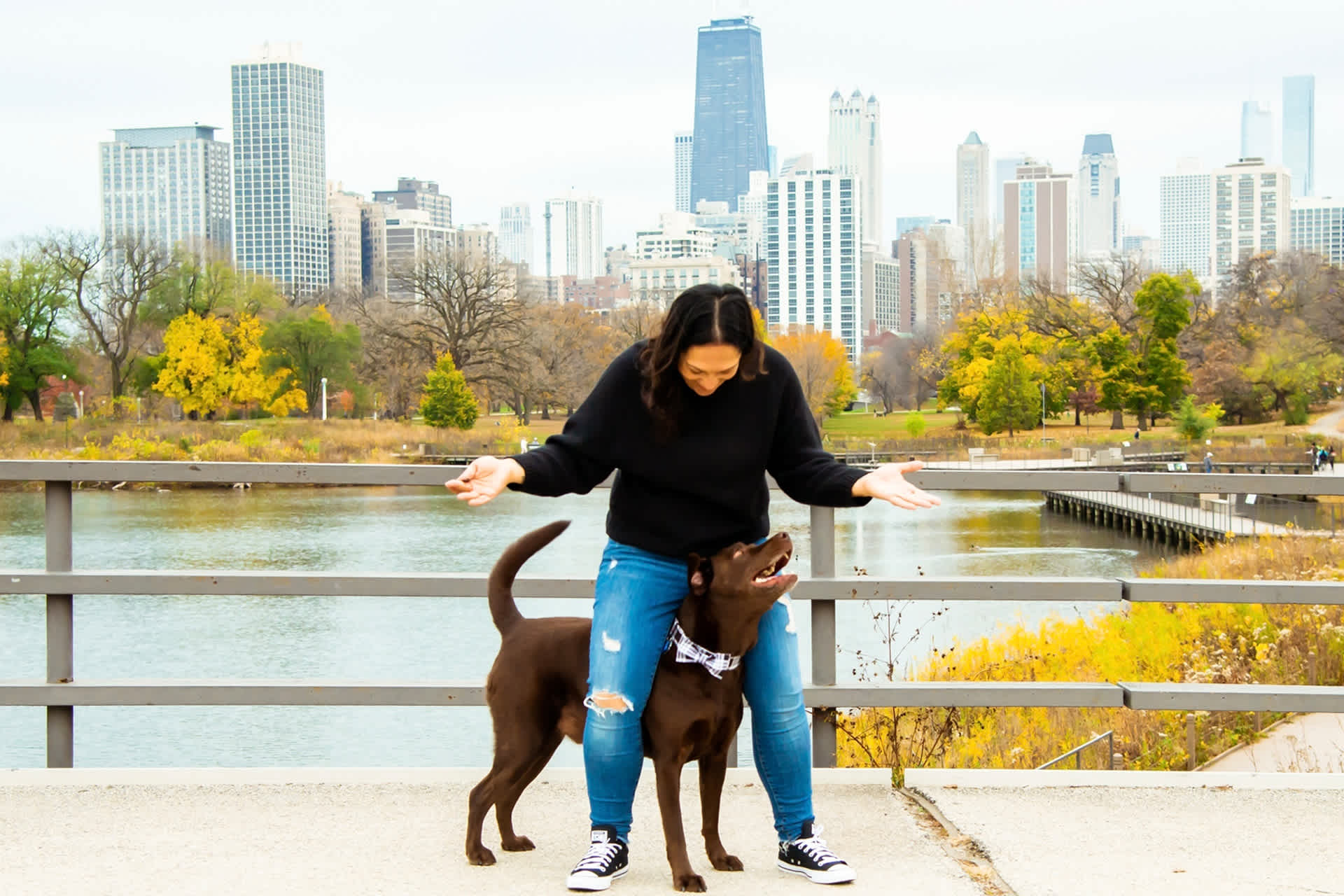A Day at Work: Dog Trainer

Many families schedule obedience lessons when they first bring a dog into their home. These can be group classes, or they can be private sessions with a professional trainer. Shir Limazati wants all dog owners to improve their communication with their furry friend. So she started a business: Another Chance Training. Here’s how Limazati spends a typical day as a professional dog trainer in Chicago, Illinois.
Early Morning Routine
Limazati teaches weekly group classes, but more often, she conducts private sessions at people’s homes. She starts working at about 7 a.m., texting the day’s clients to remind them she’s coming. “I spend my weekends studying all their information so that I’m ready for their session,” she told Your Hot Job.
Then she takes her dog, Chance, on a morning walk. They eat breakfast and play together. Before leaving for work, Limazati double-checks that she has her important supplies. “I have to make sure that my backpack is ready,” she says. “I put lots of different treats in that bag, and my laptop. If there is a certain client working on a certain scenario that I need extra tools for, I bring those, as well.” Then she drives to the first appointment of the day.
The Workday
“I spend my whole day driving from house to house,” Limazati says. “I don’t have a regular office job.” Instead, she works with five to seven families in a single day, spending an hour with each client. Every family, and every dog, needs a different kind of training. Since Limazati studied child psychology, she specializes in helping kids and dogs get along.
“Usually, there’s a dynamic where the kids are afraid of the dog, or the dog’s afraid of the kids,” Limazati says. “There’s a lot of crying. But by the time we’re done with five or more sessions, I see the kids get along with the dog and love having a dog, and that is my reward.”
How does she achieve these results? By teaching “alternative behaviors,” or different ways for humans and dogs to act around each other.
“Boundaries are probably the biggest thing I work on,” she says, offering an example: For some dogs, it can be uncomfortable when a person crawls into the dog crate. This is because the child “is going in their safe space,” Limazati says. “So it’s about educating [the family], giving them alternative behaviors.”
What do those alternative behaviors look like? “The 3-year-old wants to lie in the dog bed, because the dog gets attention when the dog is in the dog bed, and the 3-year-old wants attention too,” she says. “So what do we do? We get the 3-year-old a special chair, and the dog has its special bed, and they go to those spaces at the same time, and everybody gets celebrated. I make it a game and make it empowering.”
According to Limazati, the best way to train both humans and animals is to make the lessons fun and exciting. That means lots of rewards for good behavior. “If you just make it a big set of rules, nobody’s going to want to do it,” she says.
After each session, she takes notes to help her remember how it went. She also posts photos from the session on Instagram, celebrating the family’s progress. Then she drives to the next client’s house.
After Work
Limazati ends her workday late at night. When she returns home, she’s excited to see Chance. They play, eat dinner, and go for a walk. She checks her texts and answers questions from clients. Then she gets ready to do it all again the next day.

If you’re interested in working with animals one day, Limazati says it’s never too early to start learning. She encourages young people to “get out there and shadow,” adding: “You don't necessarily have to have a dog of your own. Go ahead and explore. Walk into a vet’s office and ask if you can talk to some of the staff. Ask them what they’re doing today. There are lots of books and videos out there, and you can be a junior trainer and practice that way.”
Finally, she says, patience and persistence are key. “I grew up learning that you only get one more chance when you make a mistake,” Limazati says. “But I believe that every human, and every dog, deserves as many chances as it takes. That’s why I called my business Another Chance. I would love for kids to think that way. You want a million chances? Take them. As long as you keep going, that’s persistence.”

